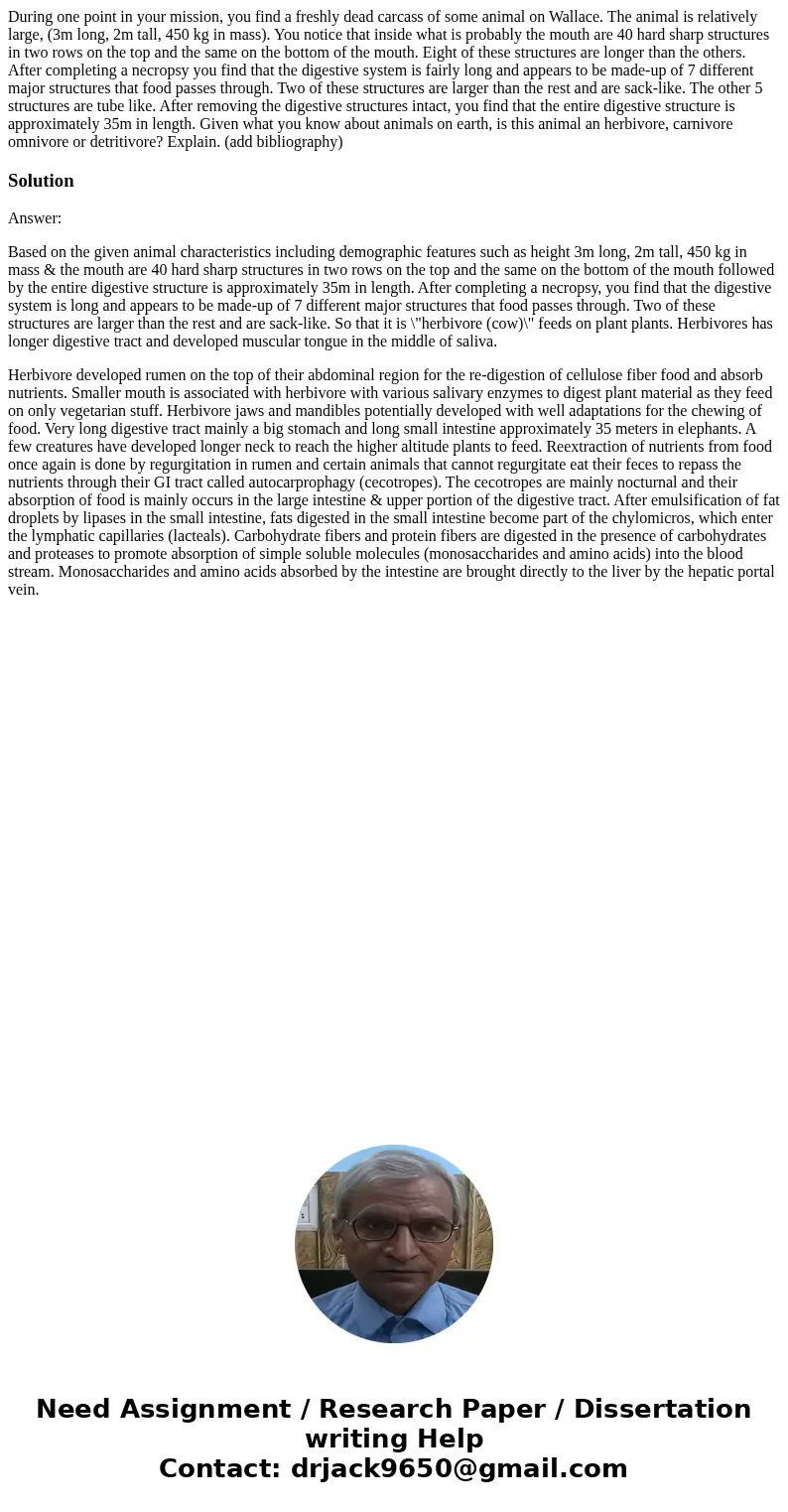During one point in your mission you find a freshly dead car
During one point in your mission, you find a freshly dead carcass of some animal on Wallace. The animal is relatively large, (3m long, 2m tall, 450 kg in mass). You notice that inside what is probably the mouth are 40 hard sharp structures in two rows on the top and the same on the bottom of the mouth. Eight of these structures are longer than the others. After completing a necropsy you find that the digestive system is fairly long and appears to be made-up of 7 different major structures that food passes through. Two of these structures are larger than the rest and are sack-like. The other 5 structures are tube like. After removing the digestive structures intact, you find that the entire digestive structure is approximately 35m in length. Given what you know about animals on earth, is this animal an herbivore, carnivore omnivore or detritivore? Explain. (add bibliography)
Solution
Answer:
Based on the given animal characteristics including demographic features such as height 3m long, 2m tall, 450 kg in mass & the mouth are 40 hard sharp structures in two rows on the top and the same on the bottom of the mouth followed by the entire digestive structure is approximately 35m in length. After completing a necropsy, you find that the digestive system is long and appears to be made-up of 7 different major structures that food passes through. Two of these structures are larger than the rest and are sack-like. So that it is \"herbivore (cow)\" feeds on plant plants. Herbivores has longer digestive tract and developed muscular tongue in the middle of saliva.
Herbivore developed rumen on the top of their abdominal region for the re-digestion of cellulose fiber food and absorb nutrients. Smaller mouth is associated with herbivore with various salivary enzymes to digest plant material as they feed on only vegetarian stuff. Herbivore jaws and mandibles potentially developed with well adaptations for the chewing of food. Very long digestive tract mainly a big stomach and long small intestine approximately 35 meters in elephants. A few creatures have developed longer neck to reach the higher altitude plants to feed. Reextraction of nutrients from food once again is done by regurgitation in rumen and certain animals that cannot regurgitate eat their feces to repass the nutrients through their GI tract called autocarprophagy (cecotropes). The cecotropes are mainly nocturnal and their absorption of food is mainly occurs in the large intestine & upper portion of the digestive tract. After emulsification of fat droplets by lipases in the small intestine, fats digested in the small intestine become part of the chylomicros, which enter the lymphatic capillaries (lacteals). Carbohydrate fibers and protein fibers are digested in the presence of carbohydrates and proteases to promote absorption of simple soluble molecules (monosaccharides and amino acids) into the blood stream. Monosaccharides and amino acids absorbed by the intestine are brought directly to the liver by the hepatic portal vein.

 Homework Sourse
Homework Sourse